Mini reviews
Riina Katajavuori & Salla Savolainen: Pentti ja kitara [Pentti and the guitar]
9 January 2014 | Mini reviews, Reviews
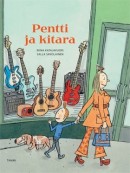 Pentti ja kitara
Pentti ja kitara
[Pentti and the guitar]
Kuvitus [Ill. by]: Salla Savolainen
Helsinki: Tammi, 2013. 32 pp., ill.
ISBN 978-951-31-6646-5
€22.90, hardback
Even early-years education is packed with activities these days. Pentti has a large extended family who really know how to have fun. He wants to learn how to play the guitar as well as his uncle Jaska. His mum tries to suggest an instrument she thinks would be more appropriate, but Pentti will not be put off. The Pentti picture book series is attractive for its nostalgic style; you can never be quite sure whether the era depicted is in the past or the present day. In this story, Riina Katajavuori focuses on what’s essential, yet still manages to convey the basics of playing the guitar – including dissonance and Jimi Hendrix. Salla Savolainen’s illustrations effectively capture the excitement of a child’s new hobby.
Translated by Ruth Urbom
Laura Lähteenmäki: Iskelmiä [Hits songs]
9 January 2014 | Mini reviews, Reviews
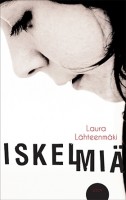 Iskelmiä
Iskelmiä
[Hit songs]
Helsinki: WSOY, 2013. 230 pp.
ISBN 978-951-0-39493-9
€28.90, hardback
Laura Lähteenmäki addresses the difficult topics of friendship and loyalty in her novels for young adult readers. Now she has taken on an important topic: the right of a girl approaching adulthood to set boundaries around her body and mind. Sixteen-year-old Aino is a good girl who hasn’t had time for anything in her life besides her involvement in the Girl Guides. Her mother’s unemployment has repercussions on their family relations, and Aino turns elsewhere to escape the melancholy atmosphere at home. Interest from her classmate Samuli comes at an opportune time, but inexperienced Aino is confused by his erratic emotions.The depiction of emotional and physical abuse in this novel is grimly authentic. Lähteenmäki provides an excellent sense of a girl’s feeling of detachment and her struggle between her environment and the pressures she has created for herself.
Translated by Ruth Urbom
Katri Tapola & Karoliina Pertamo: Toivon talvi [Toivo’s winter]
9 January 2014 | Mini reviews, Reviews
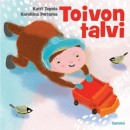 Toivon talvi
Toivon talvi
[Toivo’s winter]
Kuvitus [Ill. by]: Karoliina Pertamo
Helsinki: Tammi, 2013. 23 pp., ill.
ISBN 978-951-31-7047-9
€14.90, hardback
Most Finnish board books have been following the contemporary trend for strong colour palettes with pared-down character designs. Toivon talvi is a refreshing exception to the rule, dealing with everyday things children experience in their lives. One-year-old Toivo loves being outdoors. What’s most fun is when his mum comes out and plays with him. The first snowfall of the year causes him some confusion, but gradually Toivo learns to get the best out of the joys of winter. Katri Tapola’s story, with its child-friendly pacing which genuinely empathises with little ones’ fickle emotions, focuses on the boy’s everyday routines, thus conveying a sense of security. Karoliina Pertamo’s characters are simple sketches yet expressive enough to suit small children.
Translated by Ruth Urbom
Ville Hytönen & Matti Pikkujämsä: Hipinäaasi, apinahiisi [Donkeymonkey]
9 January 2014 | Mini reviews, Reviews
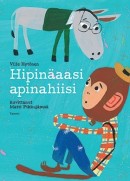 Hipinäaasi, apinahiisi
Hipinäaasi, apinahiisi
[Donkeymonkey]
Kuvitus [Ill. by]: Matti Pikkujämsä
Helsinki: Tammi, 2013. 32 pp., ill.
ISBN 978-951-31-7043-1
€24.90, hardback
In Ville Hytönen’s gently educational tale, some woodland creatures poke fun at a wheezy donkey and an oddball monkey. In the end, the animals who were the target of derision turn their unusual characteristics into strengths. Then they all make up, all the residents of the forest launch into an exuberant dance, and the earlier teasing is forgotten. Matti Pikkujämsä has been an extraordinarily productive in recent years: his illustrations have appeared in numerous newspapers and magazines as well as children’s books. Hipinäaasi, apinahiisi, which is his first solo picture book, features rhythm and movement; sometimes he creates extremely elaborate ornamentation, while other images calm the eye with spare yet colourful scraffito techniques.
Translated by Ruth Urbom
Tuomas Kyrö: Kunkku [The king]
19 December 2013 | Mini reviews, Reviews
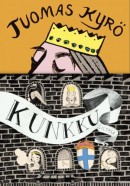 Kunkku
Kunkku
[The king]
Helsinki: Siltala 2013. 549 pp.
ISBN 975-952-234-173-0
€29.90, hardback
This novel is a satirical alternative history of successful Finland and self-destructive Sweden. It is also the story of the king of Finland – the protagonist, Kalle XIV Penttinen, is driven by his instincts, which causes him to fail as a family man. Pena, as he is called, would like to play tennis all day long and watch pole dancing at night. Finland is a fantastic wonderland of film and music industry, tennis, space technology and innovative legal usage, whereas Sweden, ravaged by war, suffers from the trauma that passes from one generation to the next. Estonia has done well for a long time, and the Soviet Union (sic) is a stronghold of democracy. Chuckling, Kyrö turns history upside down. As a writer of short prose and tragicomic novels he is currently a very popular author. However, this time his typically witty associations and inventive comedy suffer from the sheer size of this novel.
Leena Parkkinen: Galtbystä länteen [West from Galtby]
19 December 2013 | Mini reviews, Reviews
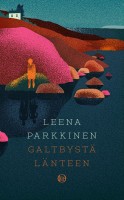 Galtbystä länteen
Galtbystä länteen
[West from Galtby]
Helsinki: Teos, 2013. 339 p.
ISBN 978-951-851-510-7
€32.90, hardback
Leena Parkkinen’s first novel, Sinun jälkeesi, Max (‘After you, Max’) was awarded the Helsingin Sanomat literature prize for best first work of 2009. Her new novel contains crime story ingredients, but the focus is on love between siblings, loss and the demand for truth. The story begins in 1947, after the war, on an island in the south-western Finnish archipelago. Sebastian, brother of Karen, has returned from the front; it’s time to mend the best clothes and dancing shoes. But to the horror of the island community, the body of a young girl is found on the shore, and Sebastian gets the blame. Sixty-five years later her brother’s fate has not left Karen alone, and she sets out to find the truth. Capable of handling different times, Parkkinen (born 1979) is also a skilful interpreter of conflicting sentiments, as unexpected twists develop towards the end.
Pauliina Rauhala: Taivaslaulu [Heaven song]
12 December 2013 | Mini reviews, Reviews
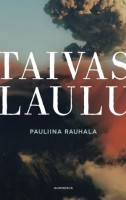 Taivaslaulu
Taivaslaulu
[Heaven song]
Helsinki: Gummerus, 2013. 281 pp.
ISBN 978-951-20-9128-7
€29.90, harcback
A religious revivalist movement is the framework for this skilfully written first novel. A young couple, Vilja and Aleksi, dream of a brood of children. Nine years and four children later Vilja feels that all joy and strength has drained away from her life. Living the reality of their religion’s ban on family planning, the couple is hit hard by the fact that Vilja is expecting twins. This is too much for her; she feels crushed by anxiety and fatigue. The ethical ground of parenthood, the good and bad sides of a religious community as well as the myths and expectations surrounding motherhood are Rauhala’s main themes. This impressive tale also contains a love story; Aleksi is a credible and sympathetic husband who first and foremost wants to believe in his wife and his family.
JP Koskinen: Ystäväni Rasputin [My friend Rasputin]
5 December 2013 | Mini reviews, Reviews
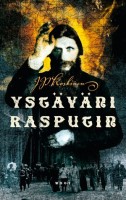 Ystäväni Rasputin
Ystäväni Rasputin
[My friend Rasputin]
Helsinki: WSOY, 2013. 355 pp.
ISBN 978-951-0-39772-5
€29.50, hardback
Prophet, healer, mystic – and political player and lecher. The hectic life of the Russian Rasputin, which ended in 1916 in assassination, offers excellent material for JP Koskinen’s novel. The fictive narrator is the young Vasili, who Rasputin hopes will be a follower. The mix of fear and adulation and wild events, described from the point of view of the young boy, are persuasive. At the court of Tsar Nicholas II Rasputin gained favour because the Tsarina trusted almost blindly in his healing abilities: the imperial family’s son Alexei was a haemophiliac. JP Koskinen’s earlier works include science fiction. Ystäväni Rasputin is a skilful writer’s description of historial events on the eve of the Russian revolution; it paints an interesting and intense portait of the atmosphere and events of the St Petersburg court. Koskinen does not over-explain; interpretation is left to the reader. The novel was on the Finlandia Prize shortlist.
Translated by Hildi Hawkins
Asko Sahlberg: Herodes [Herod]
28 November 2013 | Mini reviews, Reviews
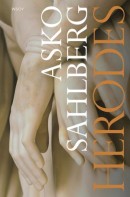 Herodes
Herodes
[Herod]
Helsinki: WSOY, 2013. 680 pp.
ISBN 978-951-0-39546-2
€40, hardback
Sahlberg’s short, concise novels about Finland’s recent past are here followed by a massive volume set in the early days of Christianity, in Judea and Galilee. Sahlberg’s accurate use of language, his pithy dialogue and vivid sense of history guarantee a reading experience. John the Baptist is the novel’s great prophet; the short, bow-legged Jeshua remains in his shadow. The main character, however, is Herod Antipas, the Roman tetrarch, and Herod’s wife and his servant are also central. Representing the imperial power in the Judea area is the prefect Pontius Pilate. Herod is a sympathetic character who has, throughout his life, alternately enjoyed and suffered from the use of power. How does power change a man? What is the meaning of trust and loyalty – not to mention love – when life is full of fear, doubt and extortion, poisoners and agitators? Sahlberg (born 1964) also opens up perspectives on the examination of our own time. The novel was on the Finlandia Prize shortlist.
Translated by Hildi Hawkins
Ville Kivimäki: Murtuneet mielet. Taistelu suomalaissotilaiden hermoista 1939–1945 [Broken minds. The battle for the nerves of the Finnish soldiers 1939–1945]
28 November 2013 | Mini reviews, Reviews
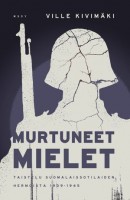 Murtuneet mielet. Taistelu suomalaissotilaiden hermoista 1939–1945
Murtuneet mielet. Taistelu suomalaissotilaiden hermoista 1939–1945
[Broken minds. The battle for the nerves of the Finnish soldiers 1939–1945]
Helsinki: WSOY, 2013. 475 pp., ill.
ISBN 978-951-0-37466-5
€37, paperback
Ville Kivimäki bases this work on his dissertation. His research concentrates on how mentally wounded soldiers of the Winter War and the Continuation war (1939–1945), were treated and what sort of conclusions can be made as regards to their age and social background. Eighteen thousand men received, or were forced to undergo, psychiatric treatment; no doubt the number of those who remained untreated and those who suffered symptoms after the war was large. Cases increased not just during combat but also during the long periods of trench warfare. Mental problems were considered shameful, and often even the psychiatrists had moralising attitudes. Those who became ill were regarded as physically and mentally weaker material, trying to benefit from their illness. Treatment relied on German methods, mainly appropriate, even though unappropriate examples exist. The goal was to return the patient to the front, to useful work or home. Kivimäki also takes a look at those who did not fall sick and describes the community of the soldiers at the front and their ways of coping. Remains of wartime attitudes were, surprisingly, seen in doctor’s views as late as the 1990s, when remunerations were discussed. The book won the Finlandia Prize for Non-fiction in 2013.
Anna-Lena Laurén: Frihetens pris är okänt. Om demokratiska revolutioner i Georgien, Ukraina och Kirgizistan [The price of freedom is unknown: On democratic revolutions in Georgia, Ukraine and Kyrgyzstan]
22 November 2013 | Mini reviews, Reviews
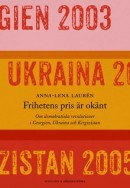 Frihetens pris är okänt. Om demokratiska revolutioner i Georgien, Ukraina och Kirgizistan
Frihetens pris är okänt. Om demokratiska revolutioner i Georgien, Ukraina och Kirgizistan
[The price of freedom is unknown: On democratic revolutions in Georgia, Ukraine and Kyrgyzstan]
Helsinki: Schildts & Söderströms, 2013. 212 pp., ill.
ISBN 978-951-523-227-4
€25, paperback
Finnish edition:
Kuinka kallis vapaus – värivallankumouksista Georgiassa, Ukrainassa ja Kirgisiassa
Suomentanut [Translated into Finnish by] Liisa Ryömä
Helsinki: Teos, 2013. 219 pp., ill.
ISBN 978-951-851-473-5
€28.40, paperback
Anna-Lena Laurén (born 1976) is an award-winning Finland-Swedish journalist, author and Moscow-based foreign correspondent. In this volume of reportage, she investigates three post-Soviet states after their ‘democratic revolutions’, which took place between 2003 and 2005. Georgia, Ukraine and Kyrgyzstan differ from one another in many respects. Georgia has made the most progress along the road to democracy, but even it remains an authoritarian state. Ukraine is plagued by corruption; impoverished Kyrgyzstan – culturally and linguistically divided, like Ukraine – is relatively free, but corruption is rife. For good or ill, these countries are overshadowed by their former ruling power, the present-day nation of Russia. Anna-Lena Laurén has listened with a keen ear to politicians, intellectuals, farmers and workers, as well as members of minority groups. She is well-versed in the history and current situation of these countries and portrays people’s everyday lives with empathy while spotting the green shoots of democracy in among the difficulties.
Translated by Ruth Urbom
Aapo Roselius: Isänmaallinen kevät. Vapaussotamyytin alkulähteillä [Springtime for the Fatherland. The origins of the freedom war myth]
14 November 2013 | Mini reviews, Reviews
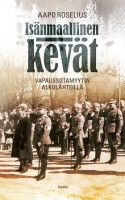 Isänmaallinen kevät. Vapaussotamyytin alkulähteillä
Isänmaallinen kevät. Vapaussotamyytin alkulähteillä
[Springtime for the Fatherland. The origins of the freedom war myth]
Helsinki: Tammi, 2013. 285 pp., ill.
ISBN 978-951-31-5821-7
€42.40, paperback
Having gained its independence from Russia in 1917, Finland descended into civil war in 1918, with the ‘Whites’ on the side of the Finnish Senate fighting against the ‘Reds’, who were aligned with the labour movement. The Whites, who emerged as victors, also termed this conflict the ‘Freedom War’. This book is based partly on Aapo Roselius’ doctoral thesis. He investigates how people after the war sought to create the foundation for an idealised view which held that the war, as the result of lengthy historical developments, secured Finland’s freedom and independence. Roselius also employs some literary techniques to show how the Whites’ victory was commemorated in celebrations, collections of reminiscences and monuments. The key remembrance organisation was the paramilitary Civil Guard, whose members had fought in the war. The losing opposition side was regarded as a threat, and there was a widespread desire to forget the more numerous casualties among the Reds and those who died in prison camps. When the Winter War broke out against the Soviet Union in 1939, men from the Left also went to war; the image of a nation defending the fatherland suppressed the myth that love of one’s homeland was the sole prerogative of the winners of the Finnish Civil War.
Translated by Ruth Urbom
Seppo Kimanen: Kimasen lento [Flight of the Humblebee]
7 November 2013 | Mini reviews, Reviews
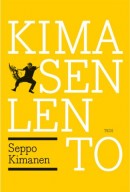 Kimasen lento
Kimasen lento
[Flight of the Humblebee]
Helsinki: Teos, 2013. 447 pp., ill.
ISBN 978-951-851-488-9
€ 28.40, hardback
Professor Seppo Kimanen (born 1949) is a cellist who has served as the director of the Helsinki Festival, held arts management positions in London and Japan, and in 1970 founded a summer music festival in Kuhmo, a small town in northern Finland, for which he continued to provide inspiring, innovative leadership for 35 years. The Kuhmo Chamber Music Festival has gone on to achieve international renown, attracting many celebrated performers. The success of the Kuhmo festival has encouraged the establishment of similar festivals in other locations. Kimanen has been supported in his work by his wife, the Japanese violinist Yoshiko Arai. In his lively, humorous musical memoir with a punning title – Kimanen’s surname is similar to kimalainen, the Finnish word for bumblebee – Kimanen gives a colourful account of the stages of his career in Kuhmo and elsewhere, including his work in the world of classical music and the important figures and leading performers he has been able to bring to Finland to perform.
Translated by Ruth Urbom
Kjell Westö: Hägring 38 [Mirage 38]
31 October 2013 | Mini reviews, Reviews
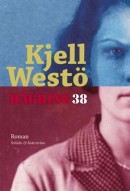 Hägring 38
Hägring 38
[Mirage 38]
Helsinki: Schildts & Söderströms, 2013. 296 pp.
ISBN 97895152332069
€34, hardback
Kangastus
Suom. [Translated into Finnish by] Liisa Ryömä
Helsinki: Otava, 2013. 334 pp.
ISBN 9789511274032
€29.90, hardback
The previous novels by Kjell Westö (born 1961) have been sweeping in their scope, encompassing several generations. Westö’s writing is characterised by a precise instinct for historical details and love for his hometown of Helsinki. Hägring 38 focuses on the year 1938; the new ideas of that era and the worsening political climate in Europe are reflected in the differences of opinion among a group of Finland-Swedish gentlemen. In June of 1938 these friends attend the opening gala for the new Olympic stadium in Helsinki and watch as the winner of the 100-metre dash, a Jew, is demoted to fourth place. [In October 2013, after the publication of Westö’s novel, the Finnish Athletics Federation finally corrected that erroneous decision, which had been made for racist reasons.] Claes Thune, a lawyer who has lost his wife to another man and suffers from depressive episodes, is a leading member of the circle of friends. His new secretary, the taciturn Mrs Wiik, is one of the central figures Westö utilises to portray the prison camps and traumatic events of the Finnish civil war of 1918.
Translated by Ruth Urbom
Rauni Ollikainen: Finnish beginnings. A childhood in Finland. A memoir
17 October 2013 | Mini reviews, Reviews
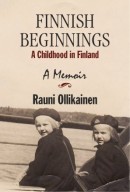 Finnish beginnings. A childhood in Finland. A memoir
Finnish beginnings. A childhood in Finland. A memoir
CreateSpace Independent Publishing Platform, 2012. 240 p., ill.
ISBN 978-1481829571
$20.40, paperback
This first volume of Rauni Ollikainen’s memoirs deals with her early life in Finland and her family’s emigration, when she was eight years old, to a new life in Vancouver, Canada. The details of her childhood, as a member of a proudly working-class Helsinki family – saunas, school, pets, her relationships with her two sisters – are lovingly chronicled. They are interestingly interleaved with the larger history around them – the Winter and Continuation Wars, and Ollikainen’s own evacuation to Sweden, which she was, frustratingly for the reader, too small to remember, and the uncertain political situation in which Finland found itself after the war, which was to prompt the Ollikainens’ departure. The book ends with the early years in Canada as the family begins to find its feet, with more promised in a follow-up volume. Although it would benefit from more in the way of narrative drive, this rich and well-observed memoir gives voice to the experience of thousands of emigrant Finns.
